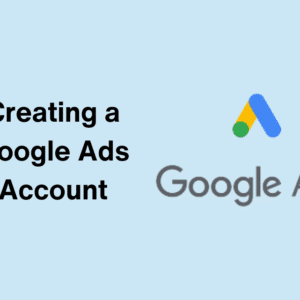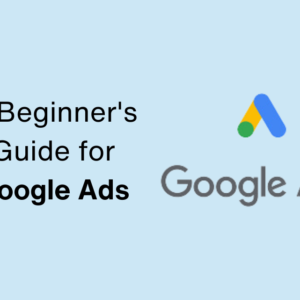Google Ads is a highly effective platform for businesses looking to promote their products and services online. One of the crucial elements of a successful Google Ads campaign is the structure of your ad groups. A well-organized ad group structure can significantly impact your campaign’s performance, helping you target the right audience, improve ad relevance, and optimize your budget. This comprehensive guide will explain the importance of ad group structure in Google Ads Campaigns, provide tips on how to create effective ad groups, and offer best practices to enhance your Google Ads campaigns.
Introduction to Google Ads Ad Groups
What are Ad Groups?
Ad groups are a critical component of Google Ads campaigns. They contain one or more ads that share a set of keywords, allowing you to organize your ads by themes or product lines. Each ad group should focus on a specific theme or product to ensure that your ads are relevant to the search queries they target.
Importance of Ad Group Structure
The structure of your ad groups can make or break your Google Ads campaign. A well-structured ad group allows for better keyword organization, more relevant ad copy, and improved quality scores, all of which contribute to higher click-through rates (CTR) and better return on investment (ROI).
The Role of Ad Group Structure in Campaign Success
Enhanced Relevance
A well-structured ad group ensures that your ads are highly relevant to the keywords being targeted. When your ads are closely related to the search queries, users are more likely to click on them, resulting in higher CTR and improved campaign performance.
Improved Quality Score
Google uses Quality Score to determine the relevance and quality of your ads and keywords. A higher Quality Score can lead to lower costs per click (CPC) and better ad positions. By organizing your ad groups effectively, you can improve your Quality Score.
Better Budget Management
Effective ad group structure allows for more precise budget allocation. By organizing your ad groups based on themes or products, you can easily identify which ad groups are performing well and allocate your budget accordingly, maximizing your campaign’s ROI.
Easier Performance Tracking
Organizing your ad groups logically makes it easier to track performance and make data-driven decisions. You can quickly identify which ad groups are driving the most conversions and which need optimization, leading to more efficient campaign management.
How to Create Effective Ad Groups
Keyword Research and Selection
Conduct Thorough Keyword Research
Keyword research is the foundation of any successful Google Ads campaign. Use tools like Google Keyword Planner, SEMrush, and Ahrefs to identify relevant keywords for your ad groups. Focus on long-tail keywords that are specific to your products or services, as they tend to have lower competition and higher conversion rates.
Group Similar Keywords
Once you have a list of keywords, group them based on their themes or relevance to your products and services. This ensures that each ad group targets a specific set of related keywords, making your ads more relevant to users’ search queries.
Crafting Relevant Ad Copy
Write Compelling Ad Headlines
Your ad headlines should be closely related to the keywords in your ad group. Use the main keyword in the headline to capture users’ attention and increase ad relevance. Ensure that the headline is compelling and clearly communicates the value of your product or service.
Create Descriptive Ad Text
The ad text should provide additional information about your product or service and include a clear call-to-action (CTA). Highlight the benefits and features that make your offering unique and encourage users to click on your ad.
Using Negative Keywords
Identify Negative Keywords
Negative keywords are search terms that you do not want your ads to trigger. Identifying and adding negative keywords to your ad groups helps prevent your ads from appearing for irrelevant searches, saving your budget for more relevant clicks.
Regularly Update Negative Keywords
Regularly review your search terms report to identify new negative keywords. Continuously updating your negative keywords list ensures that your ads remain targeted and relevant.
Best Practices for Ad Group Organization
The Single Keyword Ad Group (SKAG) Strategy
What is SKAG?
The Single Keyword Ad Group (SKAG) strategy involves creating an ad group for each individual keyword. This approach allows for highly targeted ads and precise control over your bidding and budget allocation.
Benefits of SKAG
- Higher Relevance: Ads are tailored to a specific keyword, increasing relevance and Quality Score.
- Improved CTR: Highly relevant ads lead to higher click-through rates.
- Better Budget Management: Easier to allocate budget to high-performing keywords.
Thematic Ad Groups
Group by Theme
Thematic ad groups are organized based on related themes or topics. For example, if you sell sports equipment, you could create ad groups for “running shoes,” “basketball shoes,” and “soccer shoes.” This approach ensures that each ad group targets a specific theme, making your ads more relevant.
Benefits of Thematic Ad Groups
- Organized Structure: Easier to manage and optimize campaigns.
- Increased Relevance: Ads are closely related to the themes of the keywords.
- Efficient Budget Allocation: Allocate budget to high-performing themes.
Product or Service-Based Ad Groups
Group by Products or Services
Organizing ad groups based on specific products or services allows you to create highly targeted ads. For instance, if you offer digital marketing services, you could have ad groups for “SEO services,” “PPC advertising,” and “content marketing.”
Benefits of Product-Based Ad Groups
- Targeted Ads: Ads are tailored to specific products or services, increasing relevance.
- Better Performance Tracking: Easier to track the performance of individual products or services.
- Optimized Budget Allocation: Allocate budget to high-performing products or services.
Monitoring and Optimizing Ad Groups
Performance Metrics
Track Key Metrics
Regularly monitor key performance metrics such as CTR, conversion rate, CPC, and ROI. Use Google Ads’ reporting tools to analyze the performance of each ad group and identify areas for improvement.
A/B Testing
Conduct A/B Tests
Perform A/B tests on different elements of your ads, such as headlines, ad text, and CTAs. Compare the performance of different variations to identify the most effective combinations.
Regular Reviews and Adjustments
Continuous Optimization
Regularly review your ad groups and make adjustments based on performance data. Update keywords, ad copy, and negative keywords to ensure your campaigns remain relevant and effective.
Common Mistakes to Avoid
- Overloading Ad Groups: Avoid adding too many keywords to a single ad group. This can dilute the relevance of your ads and negatively impact performance.
- Ignoring Negative Keywords: Failing to use negative keywords can result in your ads appearing for irrelevant searches, wasting your budget.
- Neglecting Ad Copy: Poorly written ad copy can lead to low CTR and poor campaign performance. Ensure your ads are compelling and relevant to your keywords.
- Lack of Regular Optimization: Failing to regularly review and optimize your ad groups can result in missed opportunities and decreased performance.
Conclusion
The structure of your ad groups is a crucial factor in the success of your Google Ads campaigns. By organizing your ad groups effectively, you can enhance ad relevance, improve Quality Score, and optimize budget allocation. Use the strategies and best practices outlined in this guide to create well-structured ad groups that drive better performance and maximize your ROI.
For more detailed information and the latest updates on Google Ads, visit the Google Ads Help Center and the Google Ads Blog.
FAQ’s
How often should I review and optimize my ad groups?
It's recommended to review and optimize your ad groups at least once a week. Regular monitoring helps identify performance issues and make timely adjustments to improve campaign performance.
Can I use multiple targeting options in a single ad group?
Yes, you can use multiple targeting options in a single ad group, such as keywords, demographic targeting, and device targeting. However, ensure that all targeting options align with the overall theme of the ad group.
What is the difference between SKAG and thematic ad groups?
SKAG involves creating an ad group for each individual keyword, allowing for highly targeted ads. Thematic ad groups, on the other hand, are organized based on related themes or topics, making it easier to manage and optimize campaigns.
How do I identify negative keywords for my ad groups?
Review your search terms report to identify irrelevant search queries that trigger your ads. Add these terms as negative keywords to prevent your ads from appearing for these searches in the future.
Should I use automated bidding strategies for my ad groups?
Automated bidding strategies can be effective, especially for large campaigns. Google Ads offers various automated bidding options, such as Target CPA and Maximize Conversions, which can help optimize your bids based on your campaign goals.
Also Read: Exploring Google Ads Campaign for maximum performance: Budget, Bidding, and Targeting







